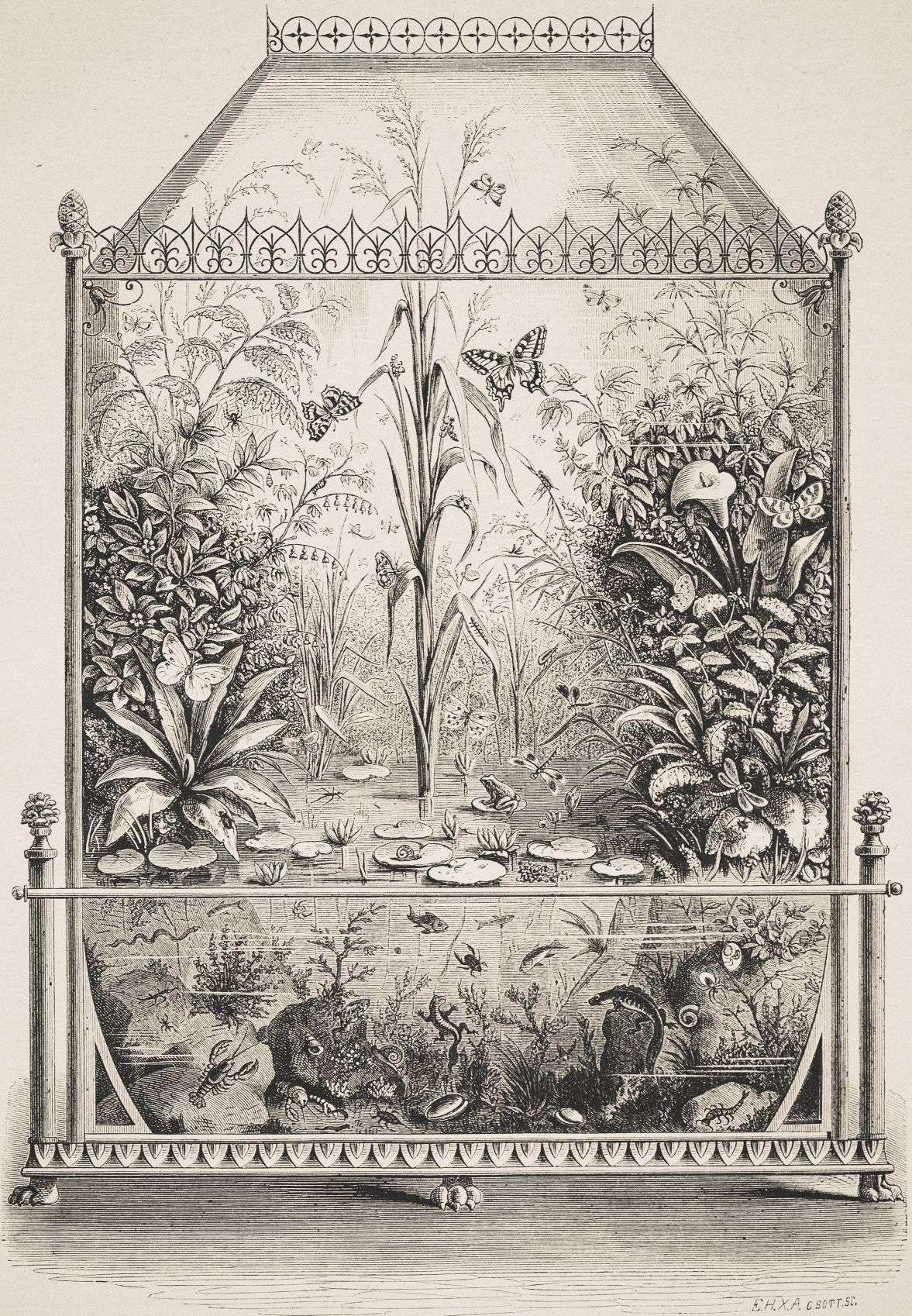
Creating a Miniature Jungle with Terrariums

Terrariums? Totally!
Odds are, you do not have a terrarium at home. And why not? They are fun to create, easy to maintain, and these small, indoor gardens are the latest trend in office and home décor. What began as a way to observe bugs in the early 1800s, ultimately changed the way plants were transported around the world, and is now popular with plant enthusiasts who want to bring nature inside.

The Wardian Case
The terrarium was discovered quite by accident. As the story goes, Dr. Ward, a botanist who lived in London in the early 1800s, not only studied plants, but he also had a fascination with insects. He kept moths and caterpillars in jars and accidentally dropped a fern seed into a jar with a moth specimen. To his surprise, the fern grew to a healthy plant. Ferns thrive in humidity, and the controlled micro-climate allowed for clean air, and condensation that collected during the night dropped to the roots in the morning. This finding was a big event because ferns and similar foliage often succumbed to the toxic air in London during this time period.
Soon after this discovery, Dr. Ward designed the Wardian Case, a decorative glass greenhouse. And while the cases made it possible for more to enjoy growing houseplants, it also revolutionized how plants were transported around the world. Glass cases had a new job—keep plants safe from salty air, wind, and weather while being shipped overseas.
Soon after this discovery, Dr. Ward designed the Wardian Case, a decorative glass greenhouse. And while the cases made it possible for more to enjoy growing houseplants, it also revolutionized how plants were transported around the world. Glass cases had a new job—keep plants safe from salty air, wind, and weather while being shipped overseas.

The Composition of Your Composition
Terrariums are built on layers of ingredients to create the best micro-climate for the plants they hold. Each layer has a purpose, starting with the vessel.
Choose Your Vessel Wisely
Choose Your Vessel Wisely
- Open terrariums are perfect for plants that prefer arid conditions like succulents or air plants.
- Closed terrariums have lids to contain humidity for plants that need moisture.
Sand or Pebbles
- Use sand or pebbles to create a drainage layer, to ensure good drainage and help create humidity.
Charcoal
- Charcoal works hard to absorb excess moisture and potential odor.
Sphagnum Moss
- Sphagnum moss is sandwiched between the charcoal and the potting soil to prevent the soil from settling into the sand and pebbles.
Potting Soil or Cactus Mix?
- Potting Soil is blended for the houseplants that prefer a little more moisture. If you're planting with succulents, the best option is Cactus Mix.
Plants
- What's a terrarium without plants? Boring! Choose plants that you love, and create an attractive mix of color, texture and size. Keep in mind that when a plant outgrows the terrarium, it can be transplanted to a traditional pot.
A Few Finishing Touches
- Once everything is planted in place, you can get creative with bobbles and bits to make it your own. Decorative glass, seashells, a favorite rock, you name it...the options are endless. And can also be changed out seasonally.
Terrarium Care Tips
for Houseplants
for Houseplants
- Plant in a vessel with, or without a lid.
- Place in indirect, bright light.
- When condensation appears on the glass, it is time to open the lid to let air in.
- Water when the top one inch layer of soil is dry.
- Mist the inside walls with a sprayer each week and avoid pouring water directly onto the leaves—this can damage or move the plant.
- To transplant from your terrarium, make sure the soil is moist in the container you’re transplanting from. Use a spoon to try to dig out a small root ball of soil about to minimize the root disturbance. Place your plant in a new container and water thoroughly.
Terrarium Care Tips
for Succulents
for Succulents
- Plant in a vessel without a lid.
- Place in indirect, bright light.
- Water when the soil is nearly dry.
- Mist the inside walls with a sprayer about every 10 days and avoid pouring water directly onto the leaves—this can damage or move the plant.
- To transplant from your terrarium, make sure the soil is moist in the container you’re transplanting from. Use a spoon to try to dig out a small root ball of soil about to minimize the root disturbance. Place your plant in a new container and hold off on watering for a few days.
